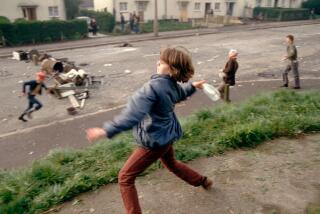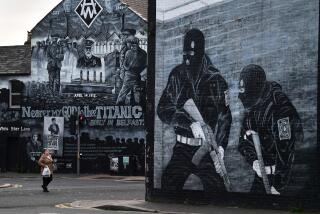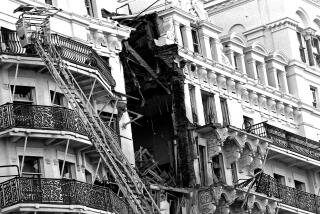Here’s what Dublin, Ireland, visitors can see of the Easter Rising during the rebellion’s centennial
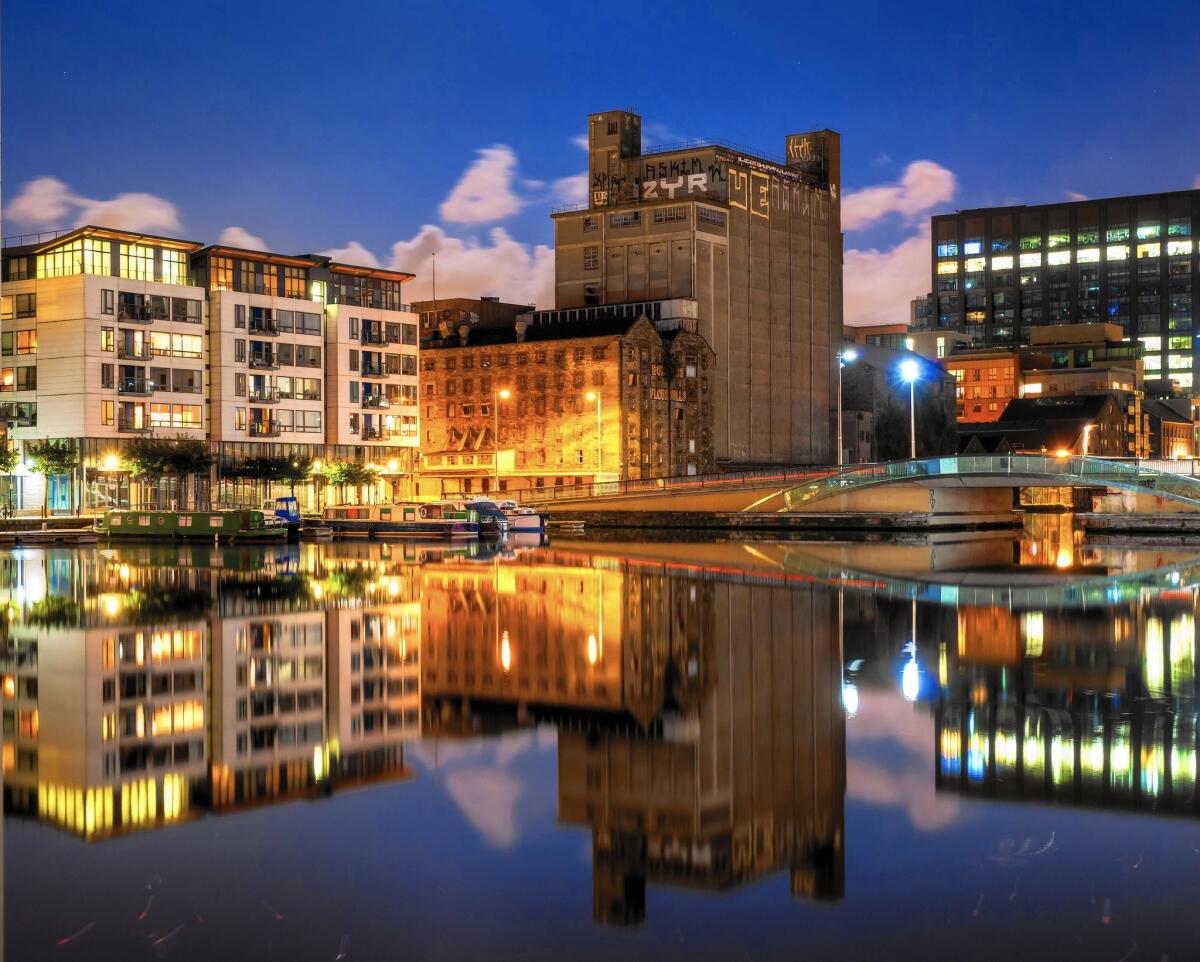
Boland’s Mill, along Grand Canal Dock in Dublin Ireland.
- Share via
DUBLIN, Ireland — Easter Monday, April 24, 1916. While World War I raged through mainland Europe, Dublin was center stage for events that would rock the British Empire and set Ireland on a course for independence. Armed men and women took to the streets of the Irish capital in a bid to found a new state. For a week the rebellion ripped through the city, which yielded to the explosives that reduced landmarks to rubble.
The uprising ended in failure, but the innocent bloodshed and rapid executions triggered an avalanche of public support for a republic. Rebel leader Joseph Plunkett married his sweetheart, cartoonist Grace Gifford, just hours before his dawn execution, which added a tragic romantic twist to the Easter Rising.
Commandant Éamon de Valera escaped execution; the future president of Ireland was spared because he was born on American soil. It was up to “Dev” and other surviving dissidents to march forward through civil war and eventually establish a new republic.
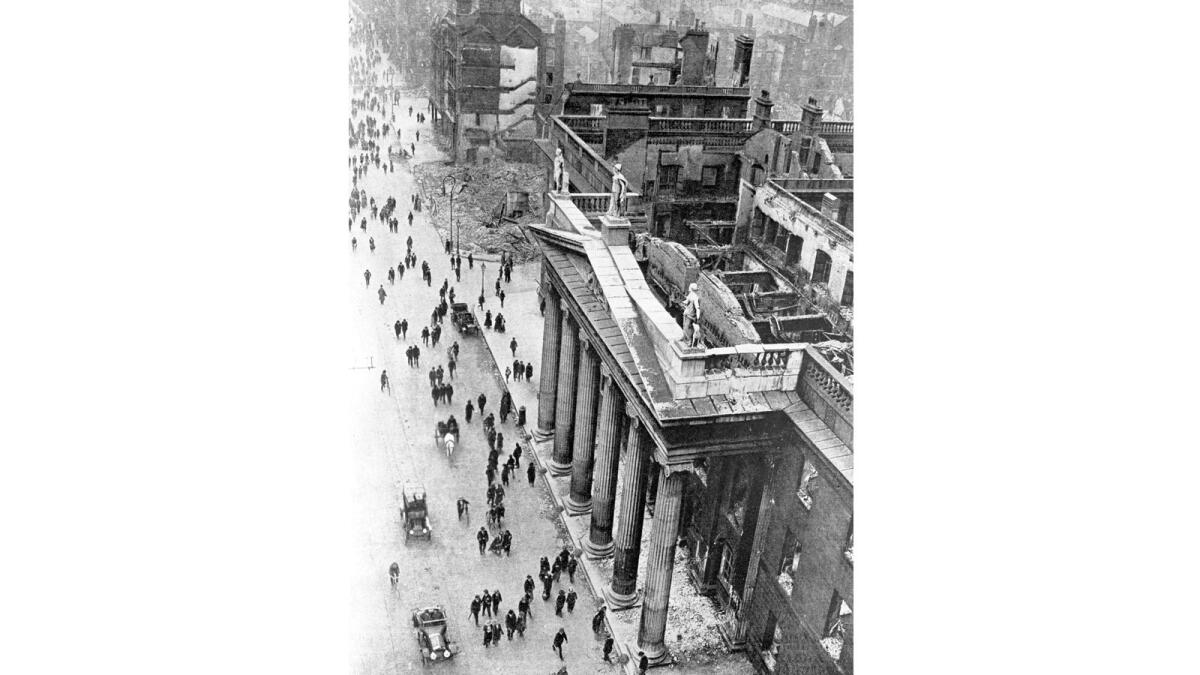
The General Post Office served as headquarters for the 1916 Easter Rising rebels in Dublin, Ireland, and was heavily damaged in the fighting. Only its facade remained intact.
Michael Collins and De Valera led the campaign and became architects of the modern political landscape. Ireland’s version of the Fourth of July was born that Easter Monday, and this year, for the 100th anniversary of the rebellion, Dublin is drawing an international audience — and even Hollywood is on board.
Liam Neeson earned a Golden Globe nomination in 1997 for his portrayal of the rebel leader in “Michael Collins,” so it’s no surprise that he was chosen to narrate a documentary titled “1916 the Irish Rebellion.” This collaboration between the University of Notre Dame and Ireland’s national broadcaster RTÉ commemorates the Easter Rising and its influence on the 20th century. It traces the fallout from that fateful Easter Monday and its rippling effect across the globe.
Ireland’s capital is host to myriad events to commemorate the centenary. Most of these will take place in the city center throughout 2016, with one exception. Glasnevin Cemetery, just outside Dublin, is Ireland’s answer to Paris’ sprawling Père Lachaise and a worthwhile excursion. Although many of the executed rebels were buried at Arbour Hill Cemetery, the surviving leaders who went on to shape modern-day Ireland are interred at Glasnevin.
Countess Constance Georgine Markievicz was the first woman to be elected to the British House of Commons and one of the first female cabinet members in Europe. She rests at Glasnevin with rebel comrades De Valera and Collins. Glasnevin Cemetery has created a series of 1916-related events that will be performed throughout this year in its outdoor museum, including a powerful daily oration by an actor dressed as rebel leader Patrick Pearse.
Touring Easter Rising sites via Google with Colin Farrell, or in person with two guide authors
Irish actor Colin Farrell has joined ranks with Google and made it easy for cyber visitors to follow the rebels’ path in Ireland’s capital. “Dublin’s Rising 1916- 2016” (dublinrising.withgoogle.com) is a step-by-step guide to 22 sites that were cornerstones of the Easter Rising rebellion.
Google Maps captures the locations as they are today, then Farrell takes you back a century, with rare footage and images that illustrate the carnage and mayhem of the Easter Rebellion.
The app and website work well for armchair travelers, but sometimes it’s best to experience the events of 1916 by meandering on foot through Dublin’s winding streets. Authors Lorcan Collins and Conor Kostick lead a daily walking tour of the capital (www.1916rising.com) and highlight Easter Rising points of interest along the way.
The pub banter afterward is as beloved as the guided walk itself. Tours at 11:30 a.m. Mondays through Saturdays and 1 p.m. Sundays; through Oct. 31. $15 per adult; booking ahead is advised.
Landmarks of the Easter Rising:
1916 LANDMARKS
The General Post Office
This was the epicenter of the 1916 Rising. Rebel leaders Patrick Pearse and James Connolly set up headquarters here and held it for a week as casualties piled up on the streets. Pearse read the Irish proclamation of independence outside the General Post Office, a copy of which can be seen in the Long Room of Trinity College’s Old Library across the River Liffey. By the end of the Easter Rising, the building was a smoldering ruin. Only the façade remained intact, with bullet holes visible today.
Info: O’Connell Street Lower, www.gpowitnesshistory.ie
St. Stephen’s Green
Easter 1916, and the tranquillity of this leafy retreat was shattered by gunfire. The rebels were led by Commandant Michael Mallin and Lt. Constance Georgine Markiewicz, a countess and the only female leader of the rebellion. They occupied the Shelbourne Hotel and dug trenches into the 22-acre green below. The entrance to the park, Fusiliers’ Arch, still has bullet holes from the battle that ensued.
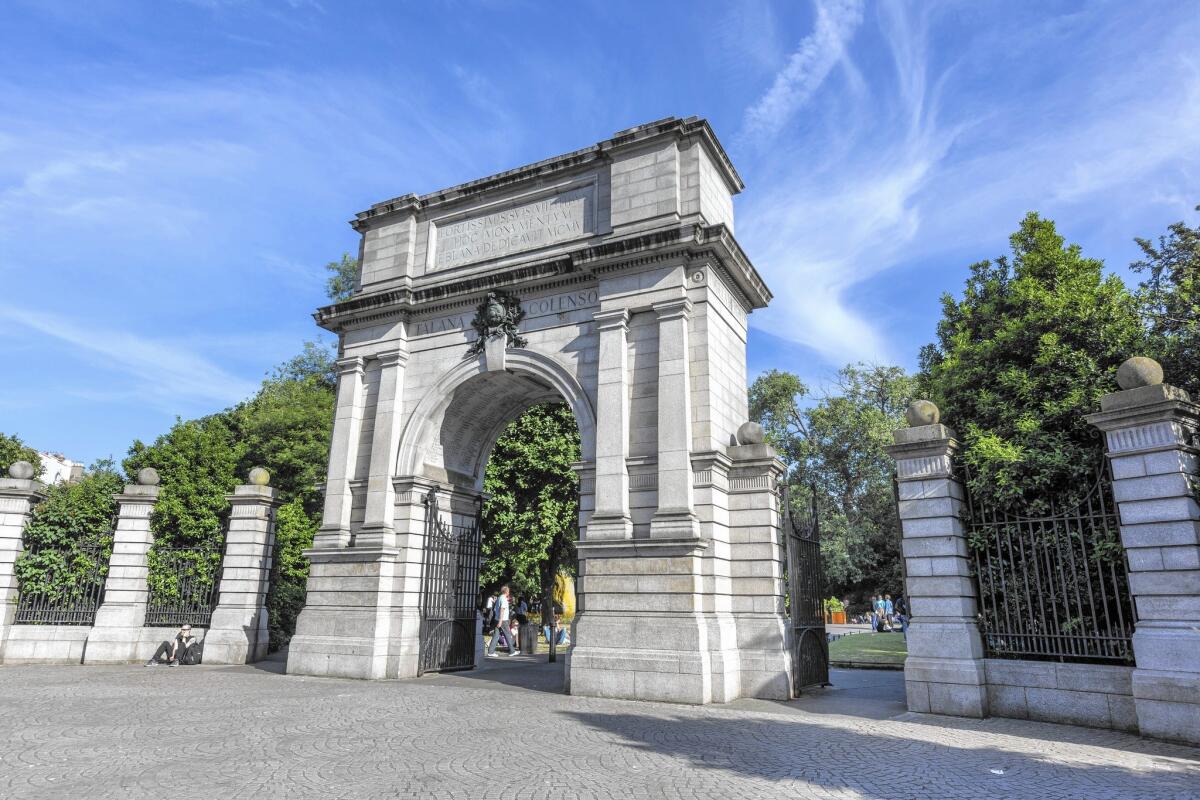
Info: www.lat.ms/25LWnQ6
Grand Canal Dock
Boland’s Mill, along Grand Canal Dock, was held by Éamon de Valera during the siege and was the last bastion to surrender. There is no better place to witness the striking transformation of Ireland’s capital city than at this hub of commerce and café lifestyle. There’s a television studio, theater and social media headquarters mixed with busy coffee houses. It’s come a long way since its days as a leprosy colony called Misery Hill.
Info: www.dublindocklands.ie
Easter Rising exhibits and events in Dublin
Easter Rising showcased
“Dublin Fire Brigade and the 1916 Rising”
The exhibition tells the story of Dublin’s firefighters during Easter week 1916 and the impact the rising had on the city. Fire engines and ambulance crews were on continuous, often dangerous duty, dealing with the razing of the city center.
Info: Dublin City Hall, Dame Street. Free; through June 30. www.lat.ms/1SR3TSC
“Proclaiming a Republic: The 1916 Rising”
The National Museum of Ireland has put on one of the largest displays of material from the period in a new exhibition housed in Collins Barracks, named for Irish revolutionary leader Michael Collins.
Info: National Museum of Ireland, Collins Barracks, Benburb Street, Dublin. Free; closed Mondays. www.lat.ms/2019bOy
Glasnevin Cemetery Museum
Tours of the cemetery tell the story of civilians and combatants buried here who were affected by, and involved in, the Easter Rising. A new 1916 Rising exhibition at the cemetery museum includes objects, letters, photos and previously unseen material.
Info: Finglas Road, Dublin; www.glasnevintrust.ie. Tours daily through Sept. 4, exhibition open through Nov. 25.
“The Plough and the Stars”
Sean O’Casey’s play “The Plough and the Stars,” which is based on the Easter Rising, runs through April 23 at the Abbey Theatre.
Info: 26/27 Lower Abbey St.; www.abbeytheatre.ie
More to Read
Sign up for The Wild
We’ll help you find the best places to hike, bike and run, as well as the perfect silent spots for meditation and yoga.
You may occasionally receive promotional content from the Los Angeles Times.
